Professor Gemmy Cheung – The Translational Asian Age-related Macular Degeneration Program: Improving Age-related Macular Degeneration Outcomes
Age-related macular degeneration (AMD) is an increasingly common disease that causes significant visual impairment. The implications include socioeconomic burdens for individuals and the population as a whole. Working to elucidate the issues surrounding AMD is Professor Gemmy Cheung, who holds senior roles at the Singapore National Eye Centre and the Singapore Eye Research Institute. She has brought together a group of expert scientists to form the Translational Asian Age-Related Macular Degeneration Program. The team is elucidating the mechanisms behind AMD to develop novel therapies, cultivate diagnostics and develop tools to better understand the impact of the disease from patients’ perspective.
Age-related Macular Degeneration
Age-related macular degeneration (AMD) is a major cause of vision impairment among elderly individuals worldwide, and is increasingly recognised as a major disease in Asia. AMD is characterised by the growth of new blood vessels beneath the retina, with a tendency to leak, causing sudden vision loss.
Significant limitations exist in current therapies because only the neovascular (‘wet’) form of AMD is amenable to anti-vascular endothelial growth factor (anti-VEGF) treatment which acts by binding VEGF and thus preventing new vessels growing underneath the retina, to prevent further damage to the retina and central vision. While anti-VEGF therapy achieves stabilisation of vision in the vast majority of cases, only 30-40% of cases achieve significant improvement.

Studying Age-related Macular Degeneration in Asia Through Collaboration
The population in Asia is rapidly ageing, resulting in increasing cases of AMD. One particular subtype of AMD, known as polypoidal choroidal vasculopathy (PCV), makes up about 50% of all AMD cases in Asia, as opposed to less than 20% of cases in white populations. PCV causes similar symptoms and is treated similarly to wet AMD. Currently, there are very limited treatments targeted specifically to this subtype of AMD.
Working to alleviate this burden of disease is Professor Gemmy Cheung Chui Ming and her team of dedicated researchers. They come from a variety of institutions and backgrounds ranging from retinal specialisms to clinical science. Some of their institutions include the Singapore National Eye Centre, the Singapore Eye Research Institute and the Duke-National University of Singapore.
In 2018, the team received an Open Fund Large Collaborative Grant from the Ministry of Health’s National Medical Research Council in Singapore. The program is titled the Translational Asian Age-Related Macular Degeneration Program (TAAP).
According to Professor Cheung, the program aims to ‘address the unmet clinical and population needs by a broad-based inter-linked “bench to bedside to population” approach, which will increase our understanding of not only the basic mechanisms of AMD and PCV, but also translate basic research into clinical studies and commercialisation, develop novel diagnostics and imaging, and drive the development of improved therapeutic strategies as well as laying the foundation for future cell-based therapy and rehabilitation technologies.’
The TAAP team has now established a vibrant platform for exchanges between basic scientists, retinal specialists and clinician-scientists. This program has also opened up many training opportunities for clinical fellows, researchers and PhD students. Internationally, TAAP has increasingly gained recognition as one of the most comprehensive translational Asian AMD programs, attracting new academic and industrial collaborations, including:
- Asian Eye Epidemiology Consortium which includes key epidemiology researchers in AMD across 22 countries. They have published a landmark meta-analysis reporting the prevalence of geographic atrophy in the Asian population.
- Asia Pacific Ocular Imaging Society PCV workgroup which includes 15 key clinical researchers in PCV from Asia, Europe and North America with notable scientific contributions to the field of retinal imaging in neovascular AMD and PCV. Two key publications have been published to date, describing i) diagnostic criteria set for PCV without the need for indocyanine green angiography (ICGA), ii) photodynamic treatment planning with OCT. These new publications will allow clinicians and researchers with limited access to ICGA worldwide to evaluate and treat PCV more effectively.
- Fight Retinal Blindness! Registry – Singapore is one of the key Asian sites for this international registry and the members of TAAP are part of the steering committee and scientific writing committee. Through this international database, the team have identified key gaps in current management, such as low presenting vision and poor adherence to treatment, which helps in the planning of strategies to improve treatment outcomes.
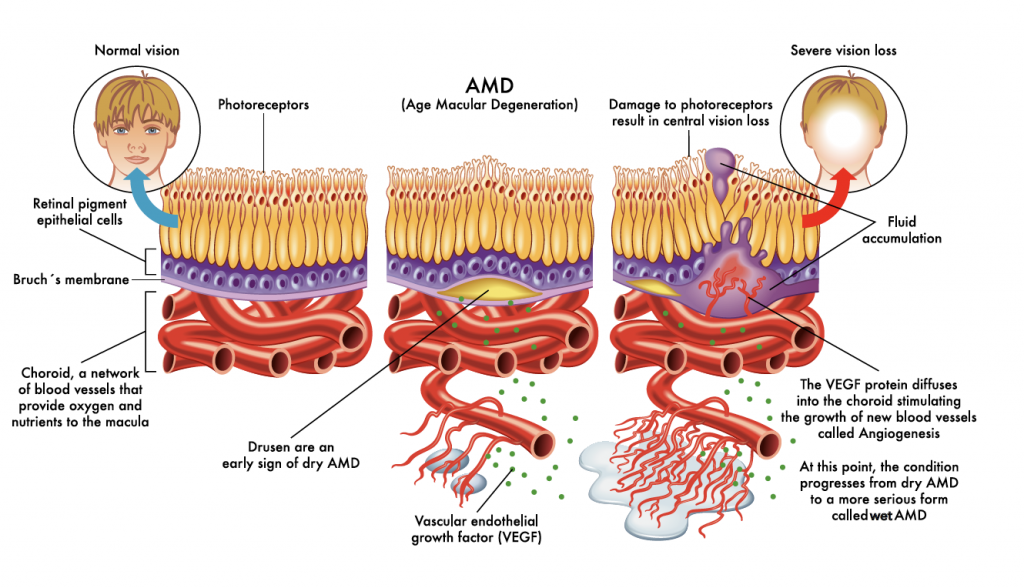
Themes Providing Structure to the Objectives
In order to meet its objectives, TAAP approaches research through five unique, but interlinking themes. This wide scope of research is aimed to lead to much a broader and deeper understanding of AMD, biologically, technologically and sociologically.
The Population Health theme is headed by Professor Tien Yin Wong and Professor Ching-Yu Cheng. In their well-established population cohort, they will report the 12-year incidence and risk factors of AMD, and evaluate the genetic background associated with AMD.
Associate Professor Xiaomeng Wang leads the theme on Pathophysiology, which investigates disease-causing pathways and mechanisms. They have identified several novel molecules which may play important role in abnormal blood vessel growth (angiogenesis) and scarring in AMD and PCV.
Professor Leopold Schmetterer, Professor Caroline Chee and Professor Cheung work on Novel Imaging techniques and Biomarkers. Their approach includes developing novel hardware and algorithms for analysis, as well as identifying imaging features that can prognosticate and guide treatments.
In the Therapeutics theme, led by Professor Cheung, Associate Professor Colin Tan and Dr Kelvin Teo, clinical trials will be conducted to evaluate cost-effective and personalised treatments and their long-term outcomes.
In the theme evaluating Quality of Life, led by Professor Ecosse Lamoureux and Professor Dan Milea, a cloud-based, computerised system will be developed to assess the impact of AMD on patients.
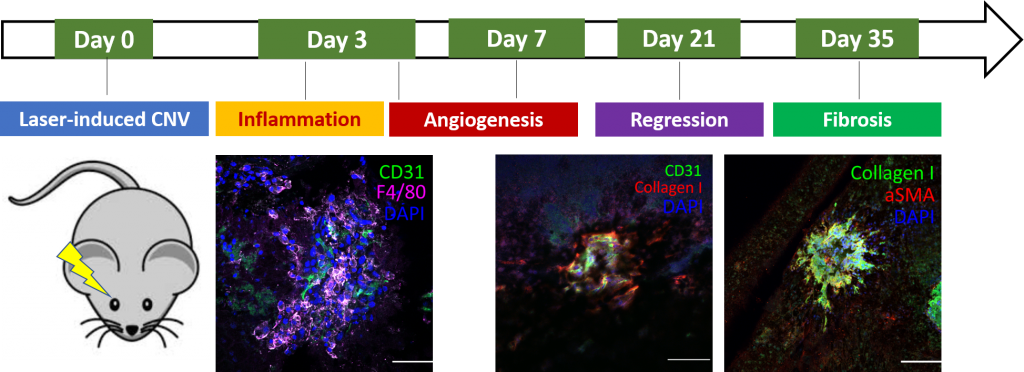
Novel Findings from the Translational Asian Age-related Macular Degeneration Program
Just three years into their project, the TAAP team have uncovered some interesting results:
Understanding Disease Burden and Risk Factors. The prevalence and risk factors for subphenotypes of AMD in Asians is unclear. The TAAP team led a large meta-analysis which reported the prevalence of macular atrophy in Asian individuals. Similarly, the prevalence of the PCV subtype has been poorly evaluated in population studies due to the reliance on invasive angiography. The clinical imaging team identified and validated a non-invasive set of diagnostic criteria that will allow the estimation of PCV cases in population studies. Concurrently, the imaging team has reported that optical coherence tomography angiography (OCTA) can non-invasively detect non-exudative neovascularisation, which is an important precursor lesion.
Developing Therapy. Several key targeted pathways of interest have been identified through genetics work and pilot metabolomics studies from patients’ serum or ocular fluid. A key target is leucine-rich alpha 2 glycoprotein 1(LRG1) which plays a role in angiogenesis and fibrosis. Neutralising antibodies to LRG1 have been developed and will be evaluated in animal models. Several clinical trials are being conducted concurrently to identify the efficacy of various anti-VEGF regimens individually and in combination with photodynamic therapy.
Recently, the team completed a randomised control trial over one year. They compared the outcome of PCV patients on a fixed regimen of the anti-VEGF drug, aflibercept, with those on a personalised and flexible treatment plan. Patients who received personalised therapy had, on average, better outcomes. These patients experienced a greater reduction of central subfield thickness and more had closure of polypoidal lesions, both of which are indicators of improved macular health. Importantly, many achieved improved best-corrected visual acuity, meaning their visual impairment was reduced.
Diagnostics and Imaging Biomarkers. The TAAP team led an international panel and developed a new and simpler way to diagnose PCV using a technique called optical coherence tomography (OCT) that uses low-coherence light to create high resolution, two- or three-dimensional images of the inner eye. Often AMD is diagnosed through ICGA, which requires an injection of indocyanine green dye that fluoresces under certain wavelengths to create images of the eye. The new OCT technique removes the need for ICGA and is deemed to be a simpler method. Aiding this diagnostic method are additional imaging biomarkers that the team developed. These can be used to predict how badly the vision of a patient with AMD/PCV will be affected by looking at images of their eye.
The team have built prototypes with polarisation-sensitive OCT and will evaluate the performance of this device in detecting ß-amyloid deposition in the retina. Another prototype combining megahertz OCT with OCTA technology will be used to evaluate choroidal vasculatures. In clinical patients, the team specialises in evaluating choroidal parameters and combines novel algorithms such as automated choroidal vascularity index and choroidal volume with traditional imaging parameters, as choroidal features may have additional prognostic value in PCV.
Developing Cost-efficient Care Pathways. The advent of anti-VEGF therapy has revolutionised the treatment for AMD in preventing blindness. Much is still unknown, especially about the long-term retreatment requirements. Until now, there have been limited data available from real-world studies in Asia. The team has published real-world data from the Singapore National Eye Center audit as well as Fight Retinal Blindness Registry, and highlighted patterns that may explain suboptimal treatment.
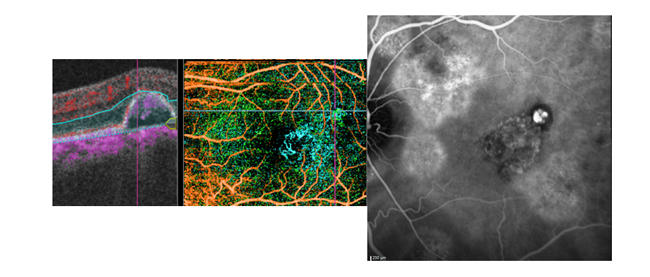
Continuing the Work
Professor Cheung and her team at TAAP are continuing their research and pushing the boundaries in their field. By clarifying mechanisms of AMD disease, progressing diagnostics and treatments and better understanding how this widespread ailment impacts those living with it, TAAP has and will continue to elucidate how patient outcomes can improve. Their work is sure to make a real difference in the lives of visually impaired people in Singapore and around the world.
The vision of this ambitious program is to develop paradigm shifts in the conceptualisation and understanding of Asian AMD, including PCV, that will lead to novel classification and evidence-based cost-effective diagnosis, prevention and treatment strategies in 5 years. Their long-term goal is to reduce AMD-related blindness by 20% in 10 years.
Reference
https://doi.org/10.33548/SCIENTIA718
Meet the researchers
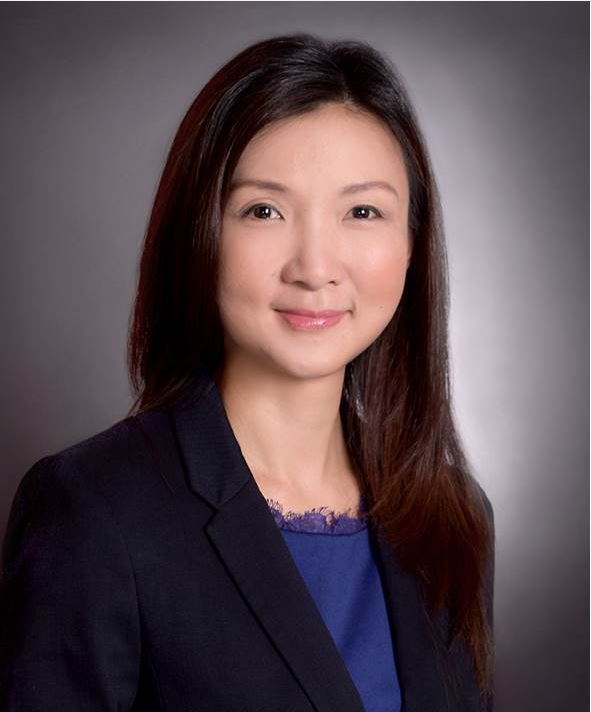
TAAP LEAD PRINCIPAL INVESTIGATOR
Professor Gemmy Cheung Chui Ming
Senior Consultant and Head, Medical Retina Department, Singapore National Eye Centre
Professor, Duke-NUS Medical School, National University of Singapore
Head, Retina research group, Singapore Eye Research Institute
Over her impressive career, Professor Gemmy Cheung Chui Ming has achieved MBBS, MRCOphth, FRCOphth and MCI qualifications. Currently, she is a Professor at Duke-National University of Singapore Medical School, National University of Singapore, Head and Senior Consultant of the Medical Retina Department at Singapore National Eye Centre and Head of the Retina Research Group at the Singapore Eye Research Institute. Professor Cheung has held numerous positions and received multiple prestigious awards for her research in ophthalmology. Her dedicated studies into retinal health, specifically AMD, have clarified causes and opened novel diagnostic and therapeutic options, and have led to multiple presentations, publications and collaborations at an international level. She has published more than 250 peer-reviewed articles and more than 10 book chapters. She has also given more than 100 invited lectures and served as an instructor on courses at the Asia-Pacific Academy of Ophthalmology, American Academy of Ophthalmology Congress.
CONTACT
E: gemmy.cheung.c.m@singhealth.com.sg
TAAP THEME PRINCIPAL INVESTIGATORS
 Professor Tien Yin Wong
Professor Tien Yin Wong Professor Ching-Yu Cheng
Professor Ching-Yu Cheng Associate Professor Xiaomeng Wang
Associate Professor Xiaomeng Wang
 Professor Leopold Schmetterer
Professor Leopold Schmetterer
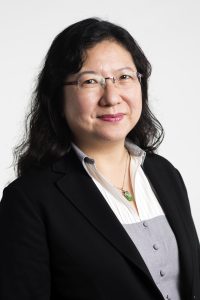 Professor Caroline Chee
Professor Caroline Chee
 Dr Kelvin Teo
Dr Kelvin Teo
 Associate Professor Colin Tan
Associate Professor Colin Tan
 Professor Ecosse Lamoureux
Professor Ecosse Lamoureux
 Professor Dan Milea
Professor Dan Milea
FUNDING
TAAP is supported by the Singapore Ministry of Health’s National Medical Research Council under NMRC/OFLCG/004/2018.
FURTHER READING
C Cheung, et al., Polypoidal Choroidal Vasculopathy: Consensus Nomenclature and Non-Indocyanine Green Angiograph Diagnostic Criteria from the Asia-Pacific Ocular Imaging Society PCV Workgroup, Ophthalmology, 2021, 128(3), 442–452.
R Man, et al., Impact of incident age-related macular degeneration and associated vision loss on vision-related quality of life, British Journal of Ophthalmology, 2021, bjophthalmol-2020-318269.
KY Teo, et al., Non-ICGA treatment criteria for Suboptimal Anti VEGF Response for Polypoidal Choroidal Vasculopathy: APOIS PCV Workgroup Report 2, Ophthalmology Retina, 2021, S2468-6530(21)00119-6.
X Yao, et al., Comparison of retinal vessel diameter measurements from swept-source OCT angiography and adaptive optics ophthalmoscope, British Journal of Ophthalmology, 2021, 105(3), 426–431.
KY Teo, et al., Efficacy of a novel personalised aflibercept monotherapy regimen based on polypoidal lesion closure in participants with polypoidal choroidal vasculopathy, British Journal of Ophthalmology, 2021, bjophthalmol-2020-318354.
BJ Fenner, et al., Real-World Treatment Outcomes of Age-Related Macular Degeneration and Polypoidal Choroidal Vasculopathy in Asians, Ophthalmology Retina, 2020, 4(4), 403–414.
SY Ho, et al., Investigating the Role of PPARβ/δ in Retinal Vascular Remodeling Using Pparβ/δ-Deficient Mice, International Journal of Molecular Sciences, 2020, 21(12), 4403.
TH Rim, et al., Prevalence and Pattern of Geographic Atrophy in Asia: The Asian Eye Epidemiology Consortium, Ophthalmology, 2020, 127(10), 1371–1381.


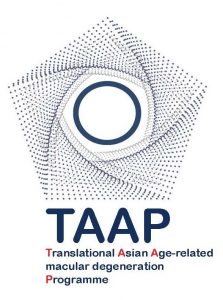
Want to republish our articles?
We encourage all formats of sharing and republishing of our articles. Whether you want to host on your website, publication or blog, we welcome this. Find out more
Creative Commons Licence
(CC BY 4.0)
This work is licensed under a Creative Commons Attribution 4.0 International License. 
What does this mean?
Share: You can copy and redistribute the material in any medium or format
Adapt: You can change, and build upon the material for any purpose, even commercially.
Credit: You must give appropriate credit, provide a link to the license, and indicate if changes were made.
More articles you may like
Dr Lifei Wang | Can Species Distribution Models Inform Us About Future Ecosystems?
The world is buzzing with news about how human activities and climate shifts are reshaping our ecosystems. Have you ever wondered how life will adapt to this rapidly changing world? Ecologists might be able to predict how different species will live in future using computer simulations. Dr Lifei Wang at the University of Toronto Scarborough investigates how different stimulations work under varying conditions to provide new insights into what may lie ahead.
Dr Yong Teng | Improving the Outlook for Head and Neck Cancer Patients
Dr Yong Teng at the Emory University School of Medicine is working with colleagues to overcome the high mortality of individuals diagnosed with cancers affecting the head and neck. One of his approaches is based on understanding the particular mechanisms of the ATAD3A gene, which new insights suggest are closely related to cancers affecting the head and neck.
Dr Tsun-Kong Sham – Dr Jiatang Chen – Dr Zou Finfrock – Dr Zhiqiang Wang | X-Rays Shine Light on Fuel Cell Catalysts
Understanding the electronic behaviour of fuel cell catalysts can be difficult using standard experimental techniques, although this knowledge is critical to their fine-tuning and optimisation. Dr Jiatang Chen at the University of Western Ontario works with colleagues to use the cutting-edge valence-to-core X-ray emission spectroscopy method to determine the precise electronic effects of altering the amounts of platinum and nickel in platinum-nickel catalysts used in fuel cells. Their research demonstrates the potential application of this technique to analysing battery materials, catalysts, and even cancer drug molecules.
Dr Michael Cherney – Professor Daniel Fisher | Unlocking Woolly Mammoth Mysteries: Tusks as Hormone Time Capsules
The impressive tusks found on proboscideans (the order of mammals that includes elephants, woolly mammoths, and mastodons) are like time capsules, preserving detailed records of their bearers’ lives in the form of growth layers and chemical traces. Frozen in time for thousands of years, these layers can unlock secrets about the lives of long-extinct relatives of modern elephants. Dr Michael Cherney and Professor Daniel Fisher from the University of Michigan used innovative techniques to extract and analyse steroid hormones preserved in woolly mammoth tusks. This ground-breaking work opens new avenues for exploring the biology and behaviour of extinct species.




